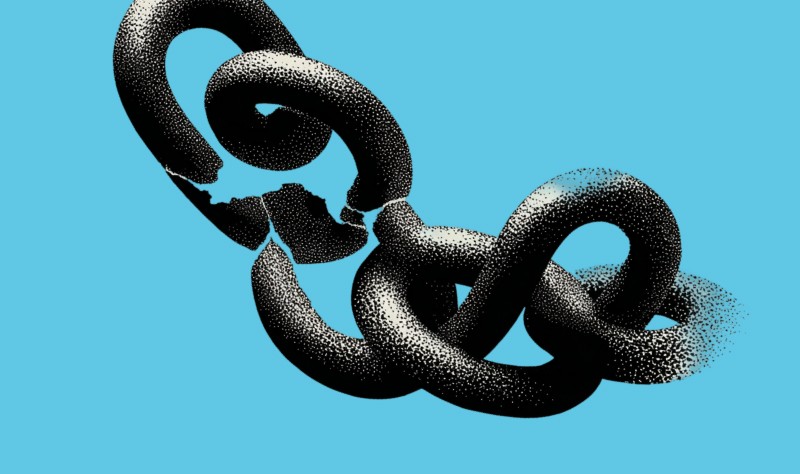It’s Getting Hot in Here: SLSA for Container Security: Everything You Need to Know

John Amaral
CTO, Co-Founder
Published :
Sep 18, 2025
SLSA (Supply-chain Levels for Software Artifacts) provides a framework for securing software supply chains through verifiable build processes, signed artifacts, and provenance tracking. For container security and vulnerability management, SLSA ensures you can trust not just what's in your containers, but how they were built and where they came from.
Supply chain attacks have evolved from rare, sophisticated threats to everyday business risks. The SolarWinds breach, npm package compromises, and malicious container images have made one thing clear: traditional security approaches that focus on scanning finished artifacts aren't enough. We need to secure the entire process of how software is built, packaged, and distributed. SLSA provides the framework, while comprehensive approaches that integrate SBOMs, VEX statements, and cryptographic attestations deliver practical security for containerized environments.
The Limitations of Traditional Vulnerability Management
Current vulnerability management follows a predictable cycle: scan artifacts, identify known vulnerabilities, apply patches, repeat. This reactive model has several fundamental limitations in containerized environments:
Temporal Blindness: Scanning only detects known vulnerabilities in existing artifacts. It can't prevent malicious code injection during the build process or identify compromised dependencies before they're incorporated.
Trust Assumptions: Traditional approaches assume that artifacts from "trusted" sources are actually trustworthy. But trust without verification is a vulnerability—especially when attackers can compromise upstream dependencies or build systems.
Patch Integrity: Every security update creates a new attack surface. How do you verify that the patch itself hasn't been compromised? Traditional tools can't distinguish between legitimate security fixes and malicious updates disguised as patches.
Supply Chain Opacity: Container images contain dozens or hundreds of components from different sources. Traditional scanning provides limited visibility into how these components were built, where they came from, or whether they've been tampered with.
This is where SLSA comes in.
What is SLSA?
SLSA is a security framework developed by Google that provides a common language for describing and implementing supply chain security. Think of it as a maturity model for software supply chains, it defines progressive levels of security guarantees that organizations can implement to prove their software hasn't been tampered with.
SLSA addresses a fundamental question: How do you know that the software you're running is actually what the developers intended to release, and that nothing malicious was injected during the build and distribution process?
The framework defines four progressive levels:
SLSA 1: Basic requirements for source control and build processes
SLSA 2: Build integrity with provenance generation and signing
SLSA 3: Enhanced security with additional hardening requirements
SLSA 4: Maximum security with reproducible builds and multiple attestations
Most organizations start with SLSA Level 1 and progress toward Level 2, where the real security benefits begin to materialize. However, containers present unique supply chain challenges.
This is because a single container image might contain:
A base operating system image (Ubuntu, Alpine, etc.)
Application runtime (Node.js, Python, Java)
Application dependencies (npm packages, Python libraries, JAR files)
Custom application code
Configuration files and scripts
Third-party tools and utilities
Each of these components represents a potential attack vector. Traditional container scanning can tell you about known vulnerabilities in these components, but it can't tell you whether the components themselves are legitimate or have been tampered with during the build process.
SLSA fills this gap by providing cryptographic proof of:
What was built (the complete software bill of materials)
How it was built (the build process and environment)
Who built it (the authenticated build system or developer)
When it was built (timestamps and build metadata)
Where the source code came from (source repository and commit)
This provenance information enables unprecedented visibility into your container supply chain.
SLSA and Vulnerability Management: The Root Connection
Vulnerability management traditionally focuses on identifying and patching known security flaws. But what happens when the patch itself is compromised? Or when a malicious actor injects vulnerable code during the build process?
This is where SLSA becomes crucial for effective vulnerability management:
Trusted Patch Sources: SLSA provenance ensures that security patches actually come from legitimate sources. When a critical vulnerability emerges, you can cryptographically verify that patches haven't been tampered with during distribution.
Build Process Security: SLSA requirements ensure that the build environments used to create patched containers are isolated and secure. This prevents attackers from injecting malicious code during the patching process.
Change Verification: SLSA provenance allows you to verify that security updates contain only the expected changes. If a "security patch" includes unexpected modifications, SLSA attestations can detect this.
Supply Chain Continuity: When you're managing vulnerabilities across hundreds or thousands of containers, SLSA provides the trust foundation that enables automated patch deployment. You can confidently apply updates knowing they come from verified sources.
This philosophy drives Root's approach to vulnerability management. Root implements SLSA across their entire platform, from container builds to patch distribution, ensuring that every security artifact includes cryptographic proof of its origin and integrity. This end-to-end approach means that when Root delivers security patches or updated container images, customers receive cryptographic proof that these artifacts haven't been tampered with and come from legitimate, secure build processes.
The Technical Foundation
SLSA implementation relies on several key technologies:
Provenance Generation: Every build process generates machine-readable metadata describing exactly what was built and how. This includes source repository information, build commands, dependencies consumed, and environmental conditions.
Digital Signatures: All artifacts (container images, build metadata, attestations) are cryptographically signed using tools like Sigstore. These signatures prove authenticity and detect tampering.
Attestation Frameworks: Structured data formats describe security properties of artifacts. This might include vulnerability scan results, compliance checks, or quality gate outcomes.
Verification Tools: Automated systems verify signatures and attestations before allowing artifacts to be deployed or consumed.
Measuring SLSA Success
SLSA implementation success can be measured through several key indicators that demonstrate both technical capability and business value. Coverage metrics track the percentage of critical artifacts that include SLSA provenance, while verification rates measure how consistently deployments actually validate SLSA attestations.
Organizations also benefit from improved incident response times when supply chain issues emerge, as provenance data enables rapid identification of affected systems. The ability to define and enforce organizational trust boundaries through cryptographic verification provides technical control over security policies, while adherence to regulatory and customer requirements for supply chain security demonstrates compliance readiness.
The SLSA ecosystem continues evolving rapidly as supply chain security becomes a mainstream business requirement. Major cloud providers, CI/CD platforms, and security tools are integrating native SLSA support, making implementation more accessible to organizations of all sizes. Government agencies are beginning to require SLSA compliance for contractor software, creating regulatory pressure that's driving industry adoption. SLSA is becoming the foundation for broader supply chain security standards and frameworks, while the supporting tooling ecosystem matures to make implementation easier and more reliable
SLSA and the Cloud Native Ecosystem
Cloud native environments amplify both the benefits and risks of modern supply chain practices. The same architectural patterns that enable rapid deployment and massive scale also create new attack surfaces that traditional security tools can't address.
Container platforms, orchestration systems, and deployment pipelines are beginning to require cryptographic proof of artifact integrity. With a few practical tips, it’s possible to implement SLSA without too much friction.
Start with your most critical container workloads and highest-risk deployment pipelines, exactly what Root enables through comprehensive SLSA integration across container builds, patch distribution, and vulnerability management workflows. Build SLSA capabilities into your cloud native toolchain before external requirements force hasty implementations that will underdeliver and be complex to implement.
In cloud native environments where trust boundaries span multiple organizations, clouds, and continents, SLSA isn't just another security framework, it's a solid foundation for trustworthy distributed systems.









